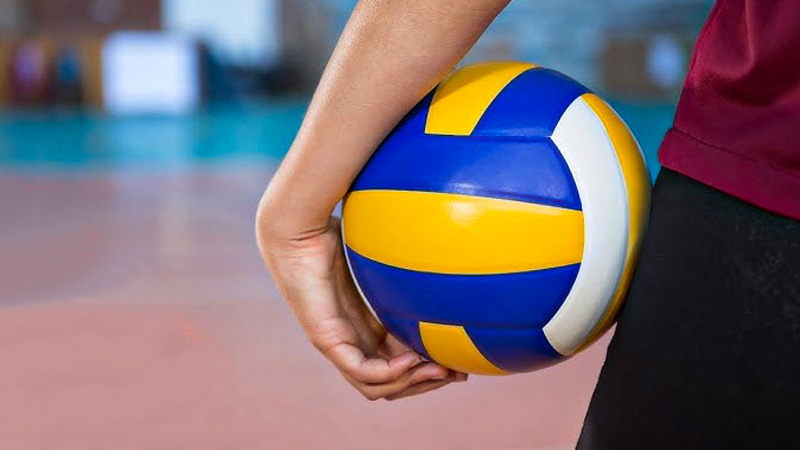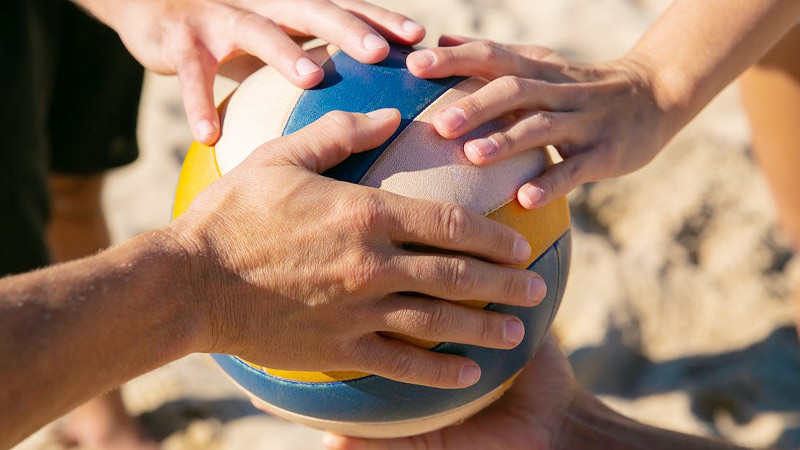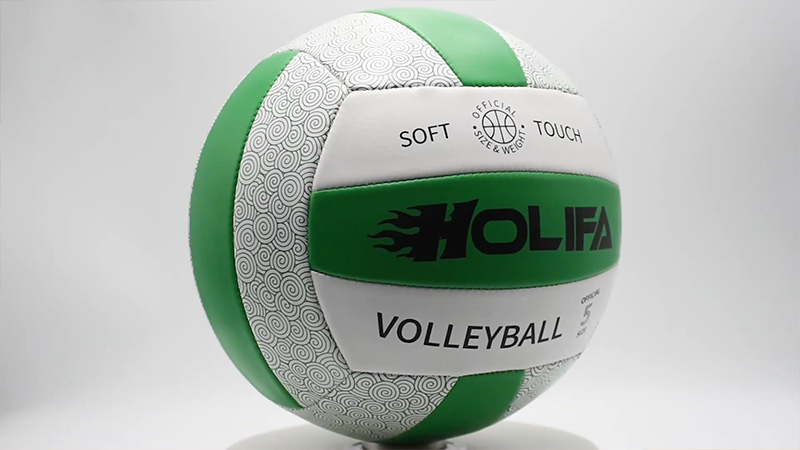High school volleyball is a dynamic sport that thrives on precision, teamwork, and adherence to strict regulations.
A crucial aspect of maintaining fairness and consistency in the game is using the correct volleyball size. In our blog post, we delve into the essential details of what size volleyball is used in high school.
We explore why it’s crucial, what factors influence its selection, and how it impacts the game. High school athletes, coaches, and parents all share a stake in understanding this fundamental aspect of the sport.
Whether you’re a player aiming to perfect your skills, a coach guiding your team, or a parent cheering from the sidelines, grasping the significance of the right volleyball size is essential. So, stay sharp.
What Size Volleyball Is Used in High School?
Many players don’t know what’s the official high school volleyball size. Actually, what size volleyball for high school is appropriate is already set by the rule.
In high school volleyball, the standard size of the volleyball used is the same as in adult and professional play.
A regulation high school volleyball typically has a circumference of 25.6 to 26.4 inches (65 to 67 centimeters) and a weight between 9.2 to 9.9 ounces (260 to 280 grams).
These specifications adhere to the guidelines established by the international governing body of the sport, the Fédération Internationale de Volleyball (FIVB).
High school volleyball players use this standard-sized ball to ensure consistency and fairness in gameplay, as it allows them to develop skills and techniques that can be applied to collegiate and professional levels of competition.
The sport’s uniformity in ball size and weight ensures that players can transition seamlessly to higher levels of play after their high school careers.
What Type of Volleyball Is Used in High School?

High schools typically use specific types of volleyballs for their competitions and practices:
Indoor Volleyball
High school volleyball predominantly features indoor volleyball, played in gymnasiums on a rectangular court with a net in the middle.
The standard indoor volleyball used in high school matches adheres to the guidelines set by the international governing body, the Fédération Internationale de Volleyball (FIVB).
It has specific size and weight requirements, ensuring consistency and fairness in gameplay.
Official Size and Weight
High school indoor volleyballs have a circumference ranging from 25.6 to 26.4 inches (65 to 67 centimeters) and a weight between 9.2 to 9.9 ounces (260 to 280 grams).
This adherence to official regulations means that high school players train and compete with the same type of ball used at collegiate and professional levels.
Consistency in ball specifications allows players to develop skills that are easily transferable to higher tiers of competition.
Durability and Brand
High school volleyball programs typically invest in durable, high-quality volleyballs designed for extended use. Common brands that produce volleyballs for high school play include Mikasa, Molten, and Tachikara.
These brands produce balls specifically designed to withstand the demands of high school practices and matches, ensuring that they last throughout the season.
Ball Color
The color of the volleyball can vary, but the most common colors used in high school volleyball are white and a combination of white and a second color, often blue, red, or yellow.
The choice of color is often governed by the lighting conditions of the gymnasium and the preference of the organizing body, such as state athletic associations or school districts.
High school volleyball primarily uses indoor volleyballs that adhere to international standards in terms of size and weight.
The Standard Volleyball Size

The standard volleyball size, used in various levels of the sport, including professional, collegiate, and high school competitions, adheres to specific regulations:
Circumference and Dimensions
The standard volleyball size has a circumference ranging from 25.6 to 26.4 inches (65 to 67 centimeters). This measurement ensures that the ball is of the appropriate size for consistent and fair gameplay across all levels.
The diameter of the ball is approximately 8.15 to 8.39 inches (20.7 to 21.3 centimeters).
These precise dimensions are defined by the international governing body of volleyball, the Fédération Internationale de Volleyball (FIVB).
Weight
The standard volleyball also has a specific weight requirement, which falls between 9.2 to 9.9 ounces (260 to 280 grams).
This weight is carefully regulated to maintain the integrity of the game, allowing players to develop their skills with a ball of consistent heft.
It ensures that the ball behaves predictably in terms of flight and bounce, promoting fair competition.
Materials and Construction
Standard volleyballs are typically constructed with an outer cover made of synthetic leather or composite materials. The inner bladder is usually made of rubber or latex.
These materials are chosen for their durability, consistent performance, and ability to withstand the rigors of the sport.
The panels of the ball are stitched together in an 18-panel or 20-panel design, which adds to the ball’s stability and playability.
Color
While the majority of volleyballs are white or white with additional color accents, variations exist.
The choice of color may depend on factors such as lighting conditions in the playing venue, event or team preferences, and sponsorships.
However, the FIVB recommends using white or light-colored balls for indoor volleyball to ensure visibility and clarity for both players and spectators.
The standard volleyball size is precisely defined by its circumference, weight, materials, and construction to maintain uniformity and fairness in the game of volleyball.
Importance of Using the Right Size

Using the right size volleyball is of utmost importance in the game of volleyball for several reasons:
Fair and Consistent Gameplay
The correct size of the volleyball ensures that all teams and players compete on a level playing field. It eliminates any advantage or disadvantage that might arise from using a ball of the wrong size.
This fairness is crucial for the integrity of the game, as it guarantees that the outcome of matches is determined by skill, strategy, and teamwork rather than equipment disparities.
Skill Development
Playing with standard-sized volleyball allows players to develop and refine their skills effectively.
Serving, passing, setting, and hitting techniques all require precise timing and coordination, which are based on the consistent size and weight of the ball.
Using the right ball promotes the development of muscle memory and a deep understanding of the game’s dynamics.
Predictable Ball Behavior
The standard size and weight of the volleyball result in consistent ball behavior. Players become accustomed to how the ball moves through the air, bounces off the floor, and interacts with the net.
This predictability is crucial for players to make accurate decisions during rallies, such as judging the trajectory and speed of the ball, which is fundamental to positioning and reacting effectively.
Injury Prevention
Playing with a properly sized volleyball helps reduce the risk of injuries. A ball that is too heavy or too large could strain players’ wrists, shoulders, and other joints.
In contrast, a ball that is too light might lead to overexertion as players try to compensate for the lack of mass.
Using the right size ball minimizes the chances of players suffering from strain or injuries related to using improper equipment.
Transition to Higher Levels
Whether it’s moving from high school to college or entering the professional ranks, using standard-sized volleyball at lower levels prepares players for the challenges they will face in higher-tier competitions.
Consistency in equipment ensures a seamless transition, allowing players to adapt their skills without major adjustments when they advance to more competitive settings.
The importance of using the right size volleyball cannot be overstated.
It upholds the principles of fairness, promotes skill development, ensures predictability in ball behavior, helps prevent injuries, and facilitates the smooth progression of players to higher levels of the sport.
Tips for Selecting the Right High School Volleyball Ball Size

Selecting the right high school volleyball ball size is essential to ensure a positive playing experience for student-athletes. Here are some tips to help make the correct choice:
Follow Official Regulations
The first and most crucial tip is to adhere to the official regulations set by the Fédération Internationale de Volleyball (FIVB).
In high school, it’s essential to use a volleyball that complies with the standard size requirements – a circumference ranging from 25.6 to 26.4 inches (65 to 67 centimeters) and a weight between 9.2 to 9.9 ounces (260 to 280 grams).
This ensures that your players are training and competing with the same size ball they’ll encounter at higher levels.
Consider Player Age and Skill Level
While the size and weight of the ball are standardized, you should also consider the age and skill level of your high school players.
Younger or less experienced athletes might benefit from a softer ball, which is easier to control and less intimidating.
As players advance in skill, they can transition to a standard-sized, more rigid ball for improved performance.
Choose a Reputable Brand
Invest in high-quality volleyballs from reputable brands known for their durability and consistency. Brands like Mikasa, Molten, and Tachikara are trusted by many high schools for their product quality.
A quality ball is not only more durable but also provides a better playing experience, making it a worthwhile investment.
Test the Volleyball
Before making a purchase, allow your players to handle and test the volleyball. Encourage them to assess how the ball feels in their hands, how it responds to their hits, and whether they are comfortable with it.
Their feedback can help you make an informed decision based on the preferences of the team members.
Consider Venue and Lighting
Take into account the specific playing conditions of your gymnasium. If your facility has poor lighting, choosing a volleyball with contrasting colors or additional markings can enhance visibility.
Additionally, consider the type of floor in your gym, as the ball’s material can impact how it interacts with different surfaces.
Selecting the right high school volleyball ball size involves a combination of compliance with official regulations, testing the ball with your players, and accounting for venue conditions.
FAQs
What size volleyball is used in high school?
In high school volleyball, the standard size used is typically a regulation-size volleyball, which has a circumference of about 25.6 to 26.4 inches (65 to 67 centimeters).
What kind of volleyball is used in high school?
High school volleyball primarily uses indoor volleyball, which is specifically designed for indoor courts. It features 18-panel construction and is made of leather or synthetic materials.
What volleyball is used in high school?
High school volleyball programs typically use regulation indoor volleyball, following the official rules set by organizations like the NFHS (National Federation of State High School Associations).
These balls are designed for indoor play with specific size and weight specifications.
Can the color of the volleyball used in high school vary?
Yes, the color of the volleyball used in high school can vary, depending on local preferences and venue conditions.
However, the FIVB recommends using white or light-colored balls for indoor volleyball to ensure visibility.
Do different levels of play, like high school and college, use the same-sized volleyball?
Yes, high school and college volleyball, along with professional competitions, use the same-sized standard volleyball.
This uniformity allows players to transition smoothly from one level to another without having to adapt to different equipment.
Wrapping Up
Choosing the right-sized volleyball for high school play is more than a matter of compliance; it’s about preserving the integrity of the sport and ensuring a level playing field for all.
As we’ve explored, the standardized size and weight set by the Fédération Internationale de Volleyball (FIVB) play a pivotal role in fair competition, skill development, and injury prevention.
By following these guidelines, high school athletes not only prepare themselves for collegiate or professional levels but also elevate their overall experience of the game.
The size of the volleyball, although seemingly small in detail, forms a crucial part of the foundation upon which the excitement, skill, and teamwork of high school volleyball are built. Thank you so much.







